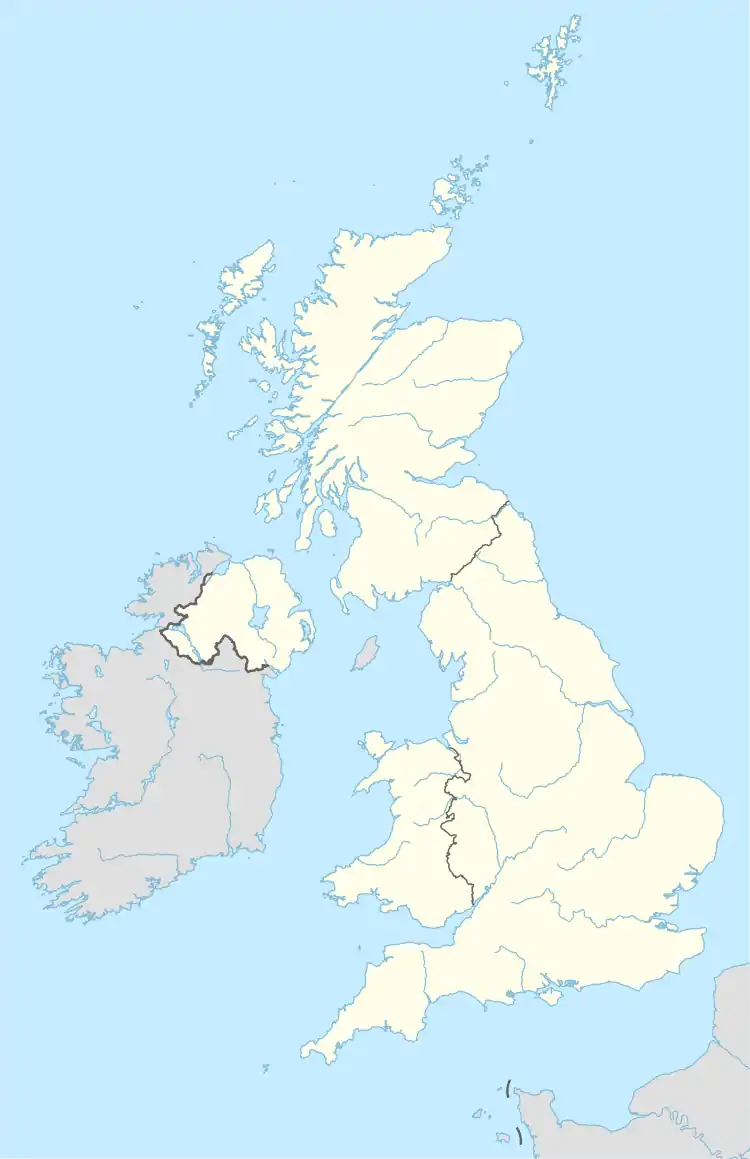| RAF Banff | |||||||||||
|---|---|---|---|---|---|---|---|---|---|---|---|
| Boyndie, Aberdeenshire in Scotland | |||||||||||
 RAF Banff Shown within Aberdeenshire  RAF Banff RAF Banff (the United Kingdom) | |||||||||||
| Coordinates | 57°40′00″N 002°38′24″W / 57.66667°N 2.64000°W | ||||||||||
| Type | Royal Air Force station | ||||||||||
| Site information | |||||||||||
| Owner | Air Ministry | ||||||||||
| Operator | Royal Air Force | ||||||||||
| Controlled by | RAF Flying Training Command 1943-44 RAF Coastal Command 1944- * No. 18 Group RAF | ||||||||||
| Site history | |||||||||||
| Built | 1942/43 | ||||||||||
| In use | April 1943 - 1946 | ||||||||||
| Battles/wars | European theatre of World War II | ||||||||||
| Airfield information | |||||||||||
| Elevation | 76 metres (249 ft)[1] AMSL | ||||||||||
| |||||||||||
Royal Air Force Banff or more simply RAF Banff is a former Royal Air Force station located 4 miles (6 km) west of Banff, Aberdeenshire, Scotland and 14 miles (23 km) northeast of Keith, Moray.
History
The airfield was sited on land belonging to the Earls of Seafield since the 16th century. Construction of the airfield began in the middle of 1942. After it was turned down by RAF Bomber Command, it was officially opened in April 1943 as an airfield for the use of No. 14 (Pilots) Advanced Flying Unit RAF of RAF Flying Training Command. This unit used the airfield until August 1944, when it was disbanded, and the airfield was handed over to RAF Coastal Command.[2]
One notable occurrence at RAF Banff in 1944 is that of Squadron Leader Cameron Martin, when his De Havilland Mosquito suffered a wing strike in high winds. The aircraft suffered major damage, but Martin and the other crew member survived with minor injuries and returned to their duties the next day.
The following squadrons were posted here at some point:
- Units
- No. 14 (Pilots) Advanced Flying Unit RAF (May 1943 - September 1944)[13]
- No. 1512 (Beam Approach Training) Flight RAF (May 1943 - August 1944)[14]
- Aberdeen University Air Squadron[11]
- No. 2749 Squadron RAF Regiment[11]
- No. 2848 Squadron RAF Regiment[11]
Current use
The site is now Boyndie Wind Farm.[11] A grass runway has been established at the Eastern end, operating as Boyndie Airstrip.[15]
See also
References
Citations
- ↑ Falconer 2012, p. 42.
- ↑ D., Bird, Andrew (2003). A separate little war : the Banff Coastal Command Strike Wing versus the Kriegsmarine and Luftwaffe, September 1944 to May 1945. London: Grub Street. pp. 14–17. ISBN 1904010431. OCLC 62087312.
{{cite book}}: CS1 maint: multiple names: authors list (link) - ↑ Jefford 1988, p. 28.
- ↑ Jefford 1988, p. 45.
- 1 2 Jefford 1988, p. 61.
- ↑ Jefford 1988, p. 75.
- ↑ Jefford 1988, p. 78.
- 1 2 Jefford 1988, p. 83.
- 1 2 Jefford 1988, p. 87.
- ↑ Jefford 1988, p. 94.
- 1 2 3 4 5 "Banff (Boyndie)". Airfields of Britain Conservation Trust. Retrieved 3 November 2013.
- ↑ Jefford 1988, p. 89.
- ↑ Sturtivant, Hamlin & Halley 1997, p. 43.
- ↑ Sturtivant, Hamlin & Halley 1997, p. 138.
- ↑ "PPRuNe Forums" (PDF).
Bibliography
- Falconer, J (2012). RAF Airfields of World War 2. UK: Ian Allan Publishing. ISBN 978-1-85780-349-5.
- Jefford, C G (1988). RAF Squadrons. A comprehensive record of the movement and equipment of all RAF squadrons and their antecedents since 1912. Shrewsbury: Airlife. ISBN 1-85310-053-6.
- Sturtivant, R; Hamlin, J; Halley, J (1997). Royal Air Force flying training and support units. UK: Air-Britain (Historians). ISBN 0-85130-252-1.